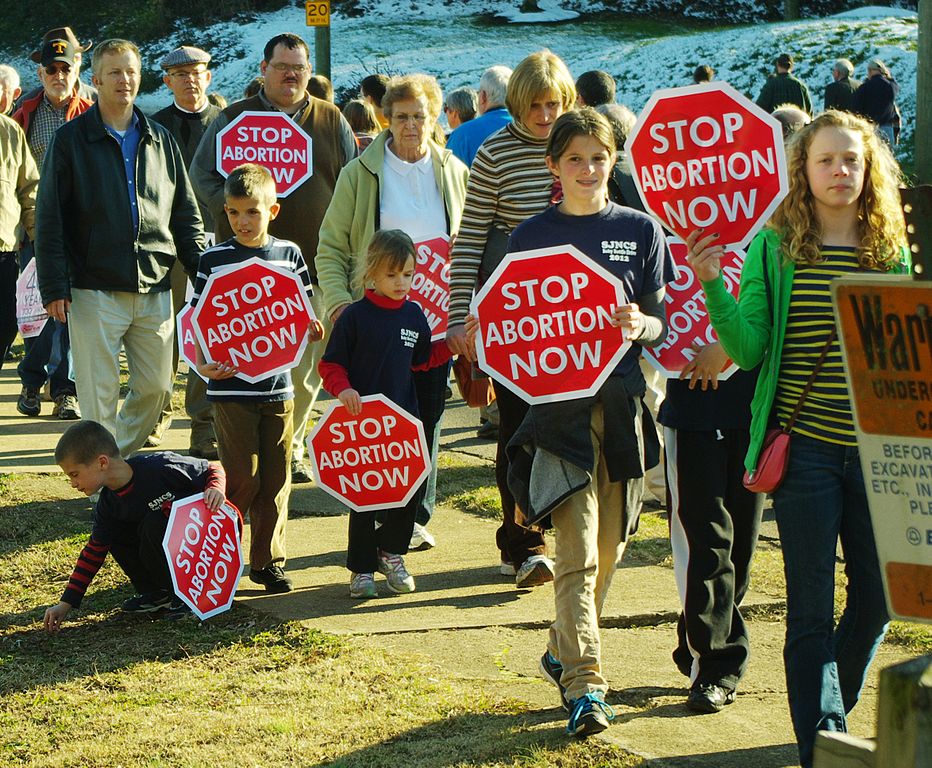Abortion
What does America think about abortion?
Amidst the sound and fury of the American abortion wars, it is frequently difficult to discern what Americans actually believe about abortion. Abortion activists insist that the country is solidly “pro-choice,” an assertion seemingly backed by recent state-level referendums; Democrats are hoping that the abortion vote will put them over the top in the presidential election this coming November. But what has the post-Dobbs political upheaval actually revealed about American public opinion?
To answer that question, I turned to my friend Dr. Michael New, a senior associate scholar at the Charlotte Lozier Institute and an assistant professor of practice at the Busch School of Business at the Catholic University of America. I’ve interviewed him many times for the podcast, as Dr. New is an expert on the social science of sanctity of life issues and a keen observer of American political trends. He kindly answered our questions on where America is at on the abortion issue – and what pro-life leaders need to know.
There has been a lot of media reports that the Dobbs decision has resulted in a backlash in which many Americans have embraced legal abortion and have become “pro-choice.” What is your view of the public opinion landscape, based on recent data?
The mainstream media is very good at cherry-picking polls that serve their narrative. When a range of polling data is analyzed, public attitudes toward abortion have been fairly stable since the Dobbs decision. The recent Gallup poll which came out earlier this month showed a two percentage point gain in the percentage of people identifying as “pro-choice” since 2023. However, what most media outlets failed to report was that the 2022 Gallup poll actually found a three percentage point *decline* in the percentage of people who identify as “pro-choice.” Overall, according to Gallup, 54 percent of people currently identify as “pro-choice.” that is almost identical to the 55 percent who identified as “pro choice” in May 2022, weeks before the Dobbs decision.
I would also add that according to Gallup, nearly all of the recent gains in “pro-choice” sentiment have occurred among self-identified Democrats. Abortion attitudes among Independents and Republicans are virtually unchanged. The fact that self-identified Democrats are becoming more supportive of legal abortions is unlikely to have much impact on elections — considering that self-identified Democrats are already consistently voting for Democratic candidates.
To what extent have current political battles simply exposed already existing rifts in American public opinion?
Current political battles have exposed existing rifts in public opinion. However, the salience of certain issues has changed over time. For most of the years after World War II, income was a strong predictor of how people would vote. High income earners were likely to support Republicans, and low income earners were likely to vote Democrat. Lately, religiosity has become a better predictor of party identification than income. Religious Americans are likely to be pro-life Republicans and secular Americans are likely to be “pro-choice” Democrats. The fact that an older, more conservative generation of Democrats is being replaced by a younger generation that is more secular will only increase this polarization along religious lines. Furthermore, the fact that a very high percentage of Democratic elected officials not only support legal abortion but also support taxpayer funding for abortion has made the Democratic Party even less hospitable to many people of faith.
Based on the available data, what percentage of Americans do you believe hold reliably pro-life views?
Based on the Gallup polls and based on the results of the referenda in Michigan and Ohio, I would say that 40 to 45 percent of Americans have reliably pro-life views. That said, many people who support legal abortion are uncomfortable with abortion and still support incremental pro-life laws. These include parental involvement laws, waiting periods, limits on late term abortions, and limits on taxpayer funding of abortion.
Public attitudes may not be where we want them. However, long term support for the pro-life positions has held stable in the face of some strong cultural headwinds. Historically pro-life sentiment is positively correlated with religiosity. It has been negatively correlated with years of formal education and income. The fact that opposition to abortion has remained stable during a time when Americans are staying in school longer, earning more money, and becoming more secular is a testament to the good work of pro-life activists.
What has been the most observable impact of Dobbs on public opinion?
The most observable impact of Dobbs is that abortion has become a more salient issue. People are more likely to prioritize abortion as an issue when they vote. Among single-issue abortion voters, pro-lifers always had a large advantage but that is not necessarily the case anymore. People who support legal abortion are now more likely to support candidates who support legal abortion. At the margins this is working to the disadvantage of pro-life candidates.
That said, I want to emphasize that any political advantage accruing to “pro-choice” candidates since Dobbs is slight. Since Dobbs, not one pro-life incumbent senator or governor has been defeated. Furthermore, multiple governors who signed strong pieces of pro-life legislation were all re-elected by large margins. This includes Governor Ron DeSantis (FL), Governor Mike DeWine (OH), Governor Greg Abbott (TX), and Governor Brian Kemp (GA). All of these Republican governors faced experienced, well financed Democratic opponents who made legal abortion an important issue in their campaign. Again, all of these Republican Governors prevailed by large margins.
What do you believe the pro-life movement needs to understand about the current landscape?
Pro-lifers should not worry all that much about short term fluctuations in public opinion. There is some evidence that public attitudes toward abortion tend to fluctuate in response to current events. There is some evidence that pro-lifers lost some ground in the court of public opinion in the aftermath of the Supreme Court’s 1989 Webster decision, because many observers felt that a reversal of Roe v. Wade was imminent. That said, the 1990s debate over partial-birth abortion led to substantial gains in pro-life sentiment.
That said, I would encourage pro-life activists and leaders to think critically about strategies for persuading more people to support the pro-life position. The post-Dobbs world provides both opportunities and challenges for pro-lifers. Gains in the court of public opinion would make it easier to prevent the passage of pro-abortion ballot propositions. It would also make it easier to enact protective pro-life laws in many states that could save literally thousands of preborn children.









I appreciate Michael New’s analysis, but sometimes he gives Bagdad Bob vibes. This is one of those times. Dr. New surely knows better than to obsess over tiny year-to-year variations in the polling data, rather to look at bigger trends. And the big trends do not look good. You can probably count on one hand the number of polls post-Dobbs that have a pro-life result (which we can define as a plurality or majority either identifying as “pro-life”, wanting to make abortion illegal under most circumstances, or supporting at least a heartbeat law with a rape exception) and they’ve done a lot of them. If you compare a post-Dobbs Gallup poll with a late-Obama era one, the former will look a lot less pro-life. Notably, a majority of Americans now say abortion is morally acceptable – something we never, ever saw before Dobbs.
Opinion polls are one thing. But real data – that is, election results and referendums – is what truly matters. At the end of the day, they will determine whether doctors can continue (or resume) legally killing unborn babies. The referendums look even worse than the opinion polls. You can write off one or two of them – Kansas is George Tiller country, California is a far-left hellhole that’s not representative of normal America. But Ohio, Kentucky, Michigan, Vermont, and Montana? That’s a clear pattern. Especially jarring is the fact that Montana’s wasn’t even a vote on abortion, but on whether infants born alive after a botched abortion must be given medical care. What about the ten years leading up to Dobbs? We won 5 out of 10 referendums on abortion.
While there’s a ceiling on how many states could legalize abortion through referendum, abortion advocates have their eyes on Florida, Missouri, Arizona, and South Dakota. Florida, home of 22 million people and the southern state with the highest abortion rate pre and post-Dobbs, is especially critical. It’s a former swing state that’s become solidly red over the last decade. Its governor, fresh off a historic victory, signed a moderate pro-life law (heartbeat with a rape exception) into law alongside a blitz of important common-sense conservative legislation related to schools, critical race theory, and child castration. Desantis made it very clear that being pro-life is an essential part of a conservative, anti-woke agenda. And Florida’s amendments require a 60 percent threshold to pass. If we cannot defeat a pro-abortion amendment there (in the midst of what will probably be a red wave statewide if not nationwide), it is difficult to see how Desantis or any other solidly pro-life candidate is viable in the 2028 Republican primary. Unfortunately, pro-life campaigners are using the same message that they did in other states. Rather than arguing against first-trimester elective abortion (the main product provided by the abortion industry), they appeal to side issues like late-term abortion, parental involvement, and gender stuff. This is a losing strategy. These are certainly important issues, but they account for a very small percentage of abortions and the well-funded pro-abortion campaign and the media are very good as making sure every voter knows this. While a small percentage of abortions is still a lot of dead babies, abortion grays do not think about doing the math when the media tells them what they want to hear (coupled with the lie that all/most are for serious reasons). And nobody is going to vote against Florida’s referendum because, while they support abortion on demand, replacing parental consent with parental notification is too extreme.
More optimistic, where I would agree with Dr. New, is pro-life governors going 11-0 in the last election. Many of them were up against heavyweight candidates and all won by comfortable or landslide margins. This includes Georgia (a Biden 2020 state with two Democrat senators) and Texas (which Democrats claim is a “reach state” that could be in their column in a good year). But this can only continue as long as Republican politicians have reason to support the pro-life movement. Polls now consistently show single-issue abortion voters are much more likely to support abortion than oppose it (a reversal from the Roe era). Republicans still need those pro-life voters, but they’re at a disadvantage. And it’s no secret that most Republican consultants as well as virtually all big Republican donors are pro-abortion. Bad polls and referendum results create a positive feedback loop – pro-life loses ground in the court of public opinion, Republican politicians refuse to campaign on pro-life, pro-life loses more ground in the court of public opinion as the Overton window shifts, Republican politicians further water down their position and run away from pro-life, ad infinitum.
The way forward is likewise tricky. It’s true that a disruptive event like the partial-birth abortion debate or Kermit Gosnell could shock abortion grays into becoming pro-life (though it’s debatable whether such events actually led to people changing their minds on abortion on demand). But such events are rare, and the media is much more biased now than it was even ten years ago. Dismemberment abortion didn’t make nearly the same splash as partial-birth abortion – the media knows that giving the pro-life side a fair shake was a mistake they won’t make ever again. They had to be shamed into covering Kermit Gosnell outside of the crime section of the local newspaper; the pundit that shamed them into doing so has retracted her opposition to late-term abortion and infanticide, now she is 100% pro-abortion and opposes freedom of speech. Journalism graduates, rather than following the mantra of “we report, you decide”, see their work as a means of advocacy. They’ll shamelessly lie about the fetal heartbeat with the help of the American Congress of Obstetricians and Gynecologists (which has also lied to the public about things like viability, why women have late-term abortions, and deaths from illegal abortions). The most conservative cable channel is actually one that tries to be “fair and balanced” on abortion, not pro-life. Its most popular host, Sean Hannity, has embraced “safe, legal, and rare” – essentially the same position taken by Obama ’08 – and didn’t face any significant calls to apologize or step down. Unlike Bill O’Reilly, none of their personalities will call out by name someone like George Tiller the Baby Killer. And the only noteworthy pro-life speech this past year came from a football kicker – no politician, bishop, or pastor has really had any impact.
Getting to this point was a tremendous accomplishment, but pro-life people still have a very long uphill battle ahead. The few breaks that we had over the last 50 years are not going to be there this time. Three years ago every state was effectively pro-abortion, and the pro-life movement has gone though challenging periods before while still eventually prevailing. But the next few years are going to be critical.
As always, I appreciate your insightful comments.